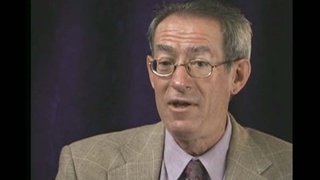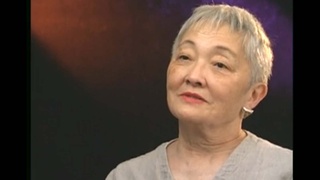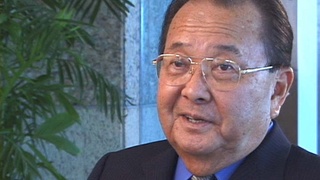Interviews
Closing the Japanese school and deportation (Spanish)
(Spanish) Before they expelled us from school, something else happened. As time passed, we believed, my father also believed, that nothing was going to happen to our school, to our director who came from Japan, to the teachers who [also] came from Japan. Here they began first in Lima, where there was a famous looting of Japanese stores. Before that happened, there was the confiscation of farms. How many Japanese lost their farms, how many Japanese lost their stores, their goods, not their stores. They emptied these stores completely…in San Nicolás there began another reaction against the Japanese. Because of this my father had sold his store, his business; therefore, the other man [previously mentioned] was well informed of what was happening in Lima and elsewhere.
They intervened in the school, closed it up, arrested the director; the bad thing was that the director had a room that no one knew about at the time, where he listened to shortwave radio broadcasts from Nihon. In the morning, while we were doing 'radio taiso,' the director would tell us about what he had just heard on the radio. The police entered and wrecked everything. They arrested the director and the teachers and shipped them off to the concentration camp.
I*: They deported them?
Ah, of course. They sent them to Texas, I believe, and the others I don’t remember. They were not together. [Some] were sent to different locations. The Americans are very skillful at such things. And we [Japanese were tossed] out on the street.
* “I” indicates an interviewer.
Date: September 6, 2007
Location: Lima, Peru
Interviewer: Harumi Nako
Contributed by: Asociación Peruano Japonesa (APJ)
Explore More Videos


A racist encounter at a movie theater following the bombing of Pearl Harbor
(b. 1923) Chick sexer


Traveling to Manzanar
(b. 1921) Nisei veteran who served in the occupation of Japan

Retaining Japanese customs (Spanish)
(b. 1950) Nisei Chilean, Businessman


Recalling Pinedale and Tule Lake concentration camps
Judge, only Japanese American to serve on CWRIC.

On the Impact of the Camp Experience
(b. 1942) The first Asian American woman judge

A memorable CWRIC testimony of an unjust situation
Judge, only Japanese American to serve on CWRIC.

Studying Japanese to understand her grandfather (Spanish)
Sansei Argentinean

“I had no idea about studying law…”
(b. 1942) The first Asian American woman judge

Attempts to sign up for military service
(1917 - 2004) Political activist

Joined Japanese Imperial Army during the WWII (Spanish)
(b. 1929) Nisei Argentinean


Delivering know-how to the next generation (Japanese)
(1911-2010) Founder of JACTO group
